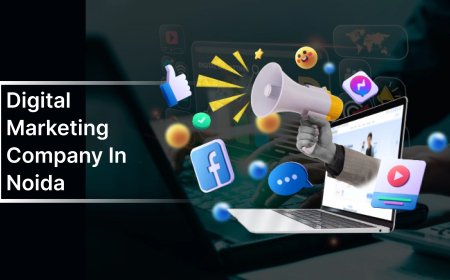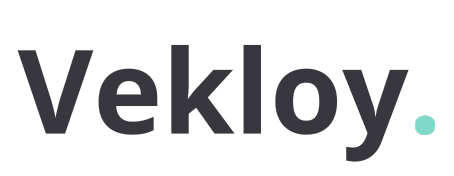OnlyFans Clone Development: Features, Costs, and Business Opportunities in 2025

The creator economy keeps expanding in 2025, and subscription-led platforms are still among the most profitable models. Building an Onlyfans clone—your own subscription fan platform with paywalled content—can be a viable venture if you approach it with a solid product plan, compliance-first operations, and a realistic budget. Below is a comprehensive guide covering the essential features, development costs, and strategic opportunities to consider before you start.
Understanding the Platform Model: How an Onlyfans clone Works and Why It Succeeds
At its core, an Onlyfans clone allows creators to publish gated content and earn directly from their audience through subscriptions, tips, pay-per-view (PPV), and other microtransactions. The platform acts as an intermediary: verifying creators, processing payments, and offering discovery, messaging, and analytics. Its stickiness comes from recurring revenue (monthly subscriptions), strong fan-creator relationships, and flexible pricing that accommodates niche communities, premium bundles, and limited-time offers.
Must-Have User Features: Building the Core Experience for Creators and Fans
Creator onboarding and verification:
-
KYC/KYB checks, identity verification, age verification, and tax forms.
-
Profile setup with tiered subscription pricing, custom bundles, and trial links.
Content publishing and scheduling:
-
Support for photos, videos (adaptive streaming), audio, stories, and long-form posts.
-
Drafts, scheduled posts, and content expiration for time-limited access.
Monetization mechanics:
-
Subscriptions (monthly/annual), free trials, discount coupons.
-
PPV messages and posts, tips, paid livestreams, and locked albums.
Fan engagement tools:
-
Direct messages (with optional PPV), live chat during streams, comment moderation.
-
Polls, Q&A stickers, and milestones to boost retention.
Search and discovery:
-
Tagging, categories, trending sections, and personalized recommendations.
-
Creator referral links and affiliate programs to accelerate growth.
Analytics and earnings dashboards:
-
Real-time balance, monthly recurring revenue, churn, ARPPU, and payout history.
-
Post-level metrics: likes, comments, paid unlocks, completion rates.
Payment and payouts:
-
Global payment options (cards, local methods, wallets), multi-currency display.
-
Flexible payout schedules, split payments, and automated invoicing.
Safety, privacy, and anti-piracy:
-
Two-factor authentication, device management, and session history.
-
Watermarking, screenshot detection prompts, DMCA workflow, and rapid takedowns.
Admin and Compliance Features: What You Need to Operate at Scale
Admin console:
-
User, creator, and content management; refund and dispute handling; pricing governance.
-
Moderation queues, ML-assisted flagging, and audit logs.
Trust & safety:
-
Age-gating, COPPA-awareness for platform-wide controls, and creator verification.
-
Content policy definition, tiered moderation workflows, and geo-restrictions where required.
Financial operations:
-
Revenue share settings, tax handling (VAT/GST), 1099/SAF-T exports, and chargeback tools.
-
Risk scoring for transactions and velocity checks for fraud prevention.
Legal and regulatory:
-
Terms of service and content guidelines tailored to your markets.
-
Data retention policies, DPA/processing agreements with vendors, and incident response plans.
Tech Architecture and Stack: Designing for Performance, Safety, and Scale
Recommended approach:
-
Microservice or modular monolith with clear domain boundaries: auth, payments, content, messaging, and analytics.
-
API-first back end (Node.js, Go, or Python), SQL for transactional data, and a search engine (Elasticsearch/OpenSearch) for discovery.
-
Object storage (S3-compatible) with signed URLs; CDN for global delivery; adaptive HLS/DASH for video.
-
Real-time features via WebSockets or WebRTC for livestreams.
-
Infrastructure as code, automated CI/CD, containerization (Docker) and orchestration (Kubernetes) for scalability.
-
Security essentials: secrets management, WAF, RASP/IAST in CI, and periodic pen testing.
Development Cost in 2025: What to Budget for MVP vs. Production-Grade Platform
Actual spend varies by scope, geography, and vendor model, but these ranges are realistic for 2025:
-
MVP (10–14 weeks): $45,000–$120,000
Includes creator profiles, subscriptions, posts, DMs, tips, basic analytics, card payments, and essential moderation. Typically one web app (responsive) plus a lightweight admin panel. -
Full-featured v1 (4–6 months): $120,000–$300,000
Adds livestreaming, PPV, coupons, referral program, advanced analytics, automated KYC, DMCA tooling, CDN integration, and production-grade observability. -
Mobile apps (iOS and Android): $60,000–$160,000
Native or cross-platform (Flutter/React Native), in-app purchases where policy allows, push notifications, offline caching for drafts. -
Operational costs (monthly): $5,000–$40,000+
Hosting/CDN/storage/streaming, payment gateway fees, KYC vendors, analytics tools, moderation staff or BPO, and legal retainers. -
Compliance and security:
Budget for privacy counsel, policy authoring, periodic audits, and third-party scanning tools.
Revenue Models and Unit Economics: How an Onlyfans clone Can Turn a Profit
-
Revenue share: 10–30% platform fee on creator earnings is common.
-
Payment fees passthrough: Some platforms pass network fees to creators/fans; clarity matters for trust.
-
Upsells: Featured placement for creators, ad slots (if policy allows), or enterprise creator packages.
-
ARPPU levers: Limited-time PPV drops, paid DMs, exclusive livestreams, and VIP tiers can lift average revenue per paying user.
-
Churn control: Trials, annual plans with discounts, “save” offers at cancellation, and loyalty milestones reduce churn and stabilize MRR.
Go-To-Market Strategy: Standing Out in a Crowded Creator Landscape
-
Niche positioning: Focus on specific creator verticals (fitness coaching, cosplay, cooking, language learning) to reduce acquisition costs and improve retention.
-
Creator-first incentives: Low fees for early adopters, migration support from other platforms, and fast payouts.
-
Content safety reputation: Transparent policies, quick DMCA responses, and a visible trust & safety roadmap.
-
Partnerships: Payment providers, talent agencies, and creator management firms can accelerate creator onboarding.
-
Data-driven marketing: Track CAC by channel, LTV by cohort, and optimize landing pages and pricing with constant experimentation.
Legal and Platform Policy Considerations: Build With Guardrails From Day One
-
Age verification and KYC: Mandatory for creators and, in certain jurisdictions, for fans.
-
Jurisdictional content rules: Some regions have stricter regulations; implement geo-controls where appropriate.
-
Payment processor policies: Adult content tolerance varies; maintain multiple processors and clear content categories to avoid sudden disruptions.
-
IP protection: Implement takedown flows, watermarking, hashes/fingerprinting, and repeat infringer policies.
-
Privacy: Maintain clear data usage disclosures, user controls for data export/deletion, and secure consent management.
Roadmap Recommendations: From MVP to Scalable Business
-
Validate your niche and fee structure with interviews and early creator signups.
-
Ship a secure MVP with the minimum monetization set: subscriptions, tips, PPV, payouts.
-
Invest in moderation and support as early differentiators, not afterthoughts.
-
Layer video and livestreaming once unit economics look healthy.
-
Scale internationally with multi-currency, localized content, and regional payment rails.
-
Continuously optimize pricing and bundles based on cohort analytics and A/B testing.
Conclusion
A thoughtfully planned Onlyfans clone can be a resilient subscription marketplace in 2025. Success depends less on cloning screens and more on designing for safety, payouts, creator trust, and repeatable growth. Prioritize compliance and moderation, build a flexible monetization engine, and focus your go-to-market on a clear niche. With the right roadmap and vendor partners, you can launch a sustainable platform that creators rely on and fans love.
Frequently Asked Questions (FAQs)
1) Is it legal to build an Onlyfans clone?
Yes, building a subscription content platform is legal in most jurisdictions, provided you comply with local laws, payment processor policies, and intellectual property rules. Age verification, DMCA processes, and clear content policies are essential.
2) What payment gateways are suitable?
Use gateways with clear policies for user-generated, paywalled content. Keep redundancy by integrating multiple processors. Support cards first, then add local methods and wallets as you scale.
3) How long does development take?
An MVP can be delivered in about 10–14 weeks, while a production-ready v1 with livestreaming and advanced moderation typically needs 4–6 months. Timelines depend on team size, scope, and integrations.
4) Do I need native mobile apps at launch?
Not necessarily. Many teams start with a responsive web app to validate demand, then invest in iOS/Android once metrics justify it. If mobile notifications and in-app purchases are critical to your niche, mobile earlier may help.
5) How do I prevent content piracy?
Combine deterrents (watermarks, legal notices) with technical controls (signed URLs, short-lived tokens, CDN rules) and a fast DMCA response. No system is perfect, but layered controls protect most creators most of the time.
6) What’s the best revenue share to offer creators?
Common ranges are 10–30%, but early platforms often start lower to attract talent. Test different fee tiers or incentives for top creators and long-term subscribers.
7) Which tech stack should I choose?
Pick a stack your team can scale and secure: a modern back end (Node.js/Go/Python), SQL database, S3-compatible storage, CDN, and WebSockets/WebRTC for real time. Prioritize observability, automated testing, and infrastructure as code.
8) How much should I budget beyond development?
Plan for ongoing cloud/CDN costs, payment fees, KYC vendors, moderation staffing, and legal/compliance support. A lean operation can run at a few thousand dollars per month post-launch; media-heavy platforms with livestreams will spend more.
What's Your Reaction?
























































